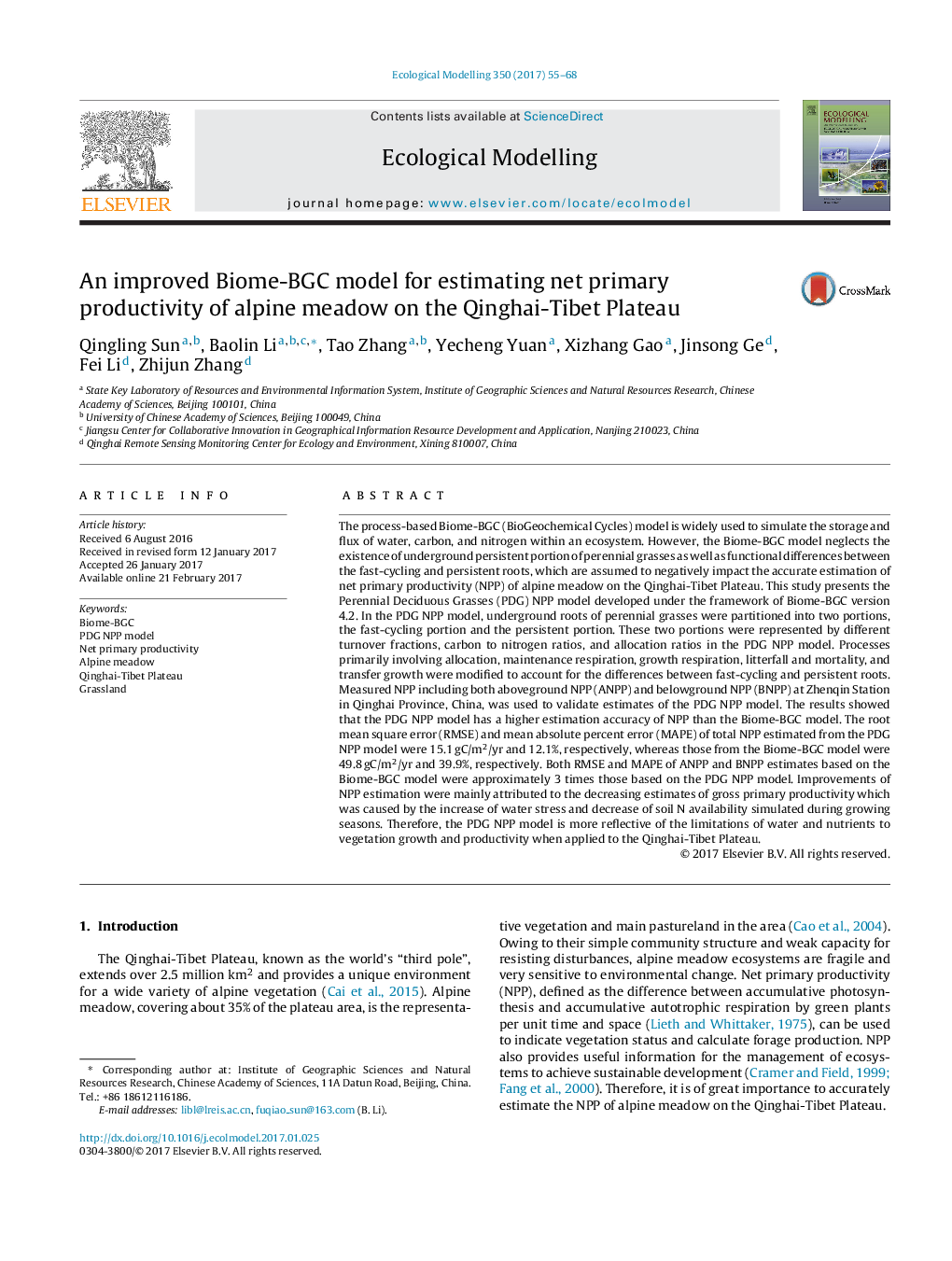| کد مقاله | کد نشریه | سال انتشار | مقاله انگلیسی | نسخه تمام متن |
|---|---|---|---|---|
| 5742234 | 1617397 | 2017 | 14 صفحه PDF | دانلود رایگان |

- A process-based NPP model under the Biome-BGC framework is proposed.
- The model considers root heterogeneity of perennial grasses.
- The newly developed model can better describe growth processes of alpine meadow.
- The model has a higher estimation accuracy of NPP than the Biome-BGC model.
- The model reflects limitations of soil water and N on productivity of alpine meadow.
The process-based Biome-BGC (BioGeochemical Cycles) model is widely used to simulate the storage and flux of water, carbon, and nitrogen within an ecosystem. However, the Biome-BGC model neglects the existence of underground persistent portion of perennial grasses as well as functional differences between the fast-cycling and persistent roots, which are assumed to negatively impact the accurate estimation of net primary productivity (NPP) of alpine meadow on the Qinghai-Tibet Plateau. This study presents the Perennial Deciduous Grasses (PDG) NPP model developed under the framework of Biome-BGC version 4.2. In the PDG NPP model, underground roots of perennial grasses were partitioned into two portions, the fast-cycling portion and the persistent portion. These two portions were represented by different turnover fractions, carbon to nitrogen ratios, and allocation ratios in the PDG NPP model. Processes primarily involving allocation, maintenance respiration, growth respiration, litterfall and mortality, and transfer growth were modified to account for the differences between fast-cycling and persistent roots. Measured NPP including both aboveground NPP (ANPP) and belowground NPP (BNPP) at Zhenqin Station in Qinghai Province, China, was used to validate estimates of the PDG NPP model. The results showed that the PDG NPP model has a higher estimation accuracy of NPP than the Biome-BGC model. The root mean square error (RMSE) and mean absolute percent error (MAPE) of total NPP estimated from the PDG NPP model were 15.1Â gC/m2/yr and 12.1%, respectively, whereas those from the Biome-BGC model were 49.8Â gC/m2/yr and 39.9%, respectively. Both RMSE and MAPE of ANPP and BNPP estimates based on the Biome-BGC model were approximately 3 times those based on the PDG NPP model. Improvements of NPP estimation were mainly attributed to the decreasing estimates of gross primary productivity which was caused by the increase of water stress and decrease of soil N availability simulated during growing seasons. Therefore, the PDG NPP model is more reflective of the limitations of water and nutrients to vegetation growth and productivity when applied to the Qinghai-Tibet Plateau.
Journal: Ecological Modelling - Volume 350, 24 April 2017, Pages 55-68